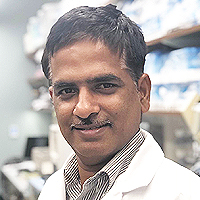Control of phytopathogenic microorganisms of post-harvest in tomato (Lycopersicon esculentum Mill.) with the use of citrus extract
Published on: 30th March, 2018
OCLC Number/Unique Identifier: 7671836913
Diseases are a major cause of post-harvest losses depending on season, region and management practices. Chemical control is the most used but with serious consequences for human health and the environment. This forces us to carry out more exhaustive studies on botanical products. The general objective of the present study was to evaluate the effect of citrus extracts for the control of pathogens that cause post-harvest diseases in tomato fruit. The product to be evaluated is of botanical origin from citrus extracts. Doses were evaluated (0, 666, 1000, 2000, 4000, 8000 ppm). The treatments were located at a temperature of 25°C±2 and 45% relative humidity (rH). The design used corresponded to a completely random design. The least significant difference was estimated by Tukey Multiple Range test at P=0.05. The statistical tests were performed through the SAS computer program. The results indicate that the pathogens detected and identified correspond to Alternaria tenuissima; Botrytis cinerea; Cladosporium fulvum; Colletotrichum coccodes; Fusarium oxysporum; Geotrichum candidum; Rhizopus stolonifer and Stemphylium macrosporoideum. Our conclusion is that the efficient doses correspond to 666, 2000 and 8000 ppm. With the application of citrus extracts, the damage percentage of tomato fruit was reduced in relation to the control treatments. Based on the results with the application of citrus extracts, the shelf life of the tomato was lengthened.
Causal agents of Post-harvest Rot of Pumpkin (Cucurbita pepo L.) and their control using Indigenous Practices in Hong, Adamawa State
Published on: 19th July, 2019
OCLC Number/Unique Identifier: 8186246781
Pumpkins (Cucurbita pepo) are grown all around the world for a variety of reasons ranging from agricultural purposes to commercial and ornamental sales. The pathogens causing the rot of pumpkin in the world include fungi, bacteria, and viruses. The study was aim to identify fungal pathogens of pumpkin rot during storage, as well as control measures of the diseases using wood ash, mango leaf and rice chaff. Three hundred and sixty-six (366) fruits of pumpkins were studied in Pela, Gaya and Kulinyi districts of Hong Local Government Area of Adamawa State. The diseased samples (fruits) were randomly purchased. Of all the districts visited, Kulinyi has the highest percentage of disease samples (43.82%) while the least is Gaya district with 21.35%. Potato Dextrose Agar (PDA) was used for the isolation of pathogens and these gave Fusarium solani, Aspergillus niger, Aspergillus flavus, and Phytophthora capsici. All the fungal isolates exhibited different degree of pathogenic effect on the pumpkin fruits. The pathogens are susceptible to treatment both In-vitro and In-vivo control trials with wood ash and mango leaf at p ≤ 0.05. Inhibition improved with increased in concentration of the wood ash and mango leaf. Rice chaff treatment equally proved worthwhile with significant inhibition compared to the control at p ≤ 0.05.
Effect of Khaya Senegalensis Bark and Oil on Post-Harvest Fungal Agents of Groundnut Seeds Rot in Adamawa State, Nigeria
Published on: 2nd August, 2019
OCLC Number/Unique Identifier: 8209659068
Standardized method of seed treatment is of prime importance in the production of groundnut. The study was to carry out control trial using bark extract (aqueous and ethanol) and oil (seed) of mahogany (Khaya senegalensis) on seven (7) isolated fungi from two groundnut varieties (peruvian and valencia). The result shows that both mahogany bark and seed extracts are capable of inhibiting mycelial growth of all the isolates. There was no significant variation between the aqueous and ethanol bark extracts in-vitro, however the in-vivo test shows a significant difference between the aqueous and the ethanol bark extract in which the ethanol extract reduced growth of the pathogens more than the aqueous. For all the pathogens except Rhizopus stolonifer there was no growth between 50% to 100% concentration of the Khaya senegalensis oil in-vitro, however in-vivo control at 50% produced scanty to moderate growth for all the pathogens except Rhizopus stolonifer on peruvian, while there was full coverage on the seeds of valencia variety with Aspergillus niger and Rhizopus stolonifer having total coverage though Pseudaiiescheria boydii and Cylindrocarpon lichenicola were effectively inhibited and showed no growth at the 50% and 100%. Further research to focus on the quantifying the chemical constituents and formulation are suggested.
Post-harvest assessment of infectious fruit rot on selected fruits in Lafia, Nasarawa State Nigeria
Published on: 15th November, 2022
The post-harvest health and microbial safety of plant products and foods continue to be a global concern to farmers, consumers, regulatory agencies and food industries. A study was carried out to evaluate the pathogenicity of fungi associated with post-harvest rot of oranges, watermelons and bananas in Lafia, Nasarawa State, Nigeria. Healthy fruits inoculated with fungal spores obtained from rotted fruit tissues were incubated at ambient temperature conditions and observed daily for the appearance and development of tissue rot. Oranges and Watermelons had the highest number of fungal isolates (3) compared to banana (2). Fungi belonging to the genus Curvularia were the most isolated (37.50%), followed by both Aspergillus and Colletotrichum (25.00% respectively) and lastly Alternaria (12.50%). The highest tissue rot diameter of sweet orange (2.40 cm) was induced by Alternaria sp. followed by Curvularia geniculate (1.40 cm) and lastly Colletotrichum sp. (1.28 cm). The highest rot of banana fruit tissues was produced by A. niger (3.90 cm), followed by Curvularia geniculate (3.40 cm). Aspergillus sp. produced the highest tissue rot diameter on watermelon fruits (1.93 cm), followed by Colletotrichum sp. (1.30 cm) and lastly Curvularia geniculate (1.20 cm). Differences in the susceptibilities of different fruits to rot by fungal pathogens were significant (p ≤ 0.05). There is need for improved handling of fruits after harvest to prevent losses due to bacterial and fungal rots in the study area.
The Effect of Zinc Oxide, Copper, and Silver Nanoparticles Synthesized by the Green Method for Controlling Strawberry Gray Mold Fungus, B. Cinerea Pers
Published on: 10th July, 2023
Gray mold disease, caused by the fungus Botrytis cinerea, causes heavy losses in strawberries. The use of chemical fungicides due to the dangers for humans and the environment has caused attention to reduce their consumption and use biological methods. In this research, the effects of zinc oxide, copper, and silver nanoparticles have been synthesized from an aqueous extract of cloves, and the probiotic bacteria Lactobacillus casei by the green method was investigated on the gray mold disease of strawberries. The results showed that concentrations of 10% of zinc oxide nanoparticles synthesized from aqueous extract of cloves can completely control this pathogen on the culture medium and the fruit. Zinc and silver nanoparticles produced by Lactobacillus casei prevented 93.7% and 81% of fungal growth in the culture medium, respectively. Other treatments did not show a good inhibitory effect on the fungus. All treatments were able to prevent 100% to 50% of fungal growth after 96 hours on strawberries. The investigation of the storage characteristics showed the positive effect of the examined nanoparticles on reducing the rate of change of the physicochemical characteristics of the strawberry fruit tissue. Apparent decay was significantly reduced and samples treated with nanoparticles scored higher in sensory evaluation compared to control. Also, investigating the toxicity of nanoparticles in this experiment on the HepG2 cell line showed that Compared to the control, copper and zinc nanoparticles did not have significant toxicity on cells, but silver nanoparticles led to 25% cell death. This research provides promising results in the field of using nanoparticles for pre-harvest and post-harvest control of plant diseases.
















